All macOS versions from 2001 to 2022
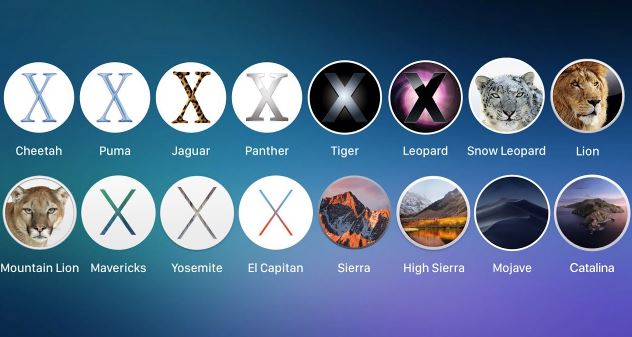
macOS is a powerful system that has been installed on millions of computers around the world. In this article, we will take a look at all the macOS versions from 2001 to 2022, and what they are good for. We will also provide some tips on how to get the most out of macOS.
Is there any difference between Mac OS X and macOS?
Yes, there is a difference between Mac OS X and macOS. macOS is the new name for the operating system that came with Apple’s latest desktop computer, the Mac Pro. Mac OS X was the name of the operating system that was used before that.
One big difference between Mac OS X and macOS is that macOS comes with a new user interface called High Sierra. This interface looks different from the older interfaces and it’s easier to use. You can use it to work on your computer and to keep track of your files. MacOS also comes with many new features, including security improvements, better performance, and more compatibility with other programs.
List of macOS versions

macOS is a line of the desktop, laptop, and tablet operating systems developed and marketed by Apple Inc. since 2001. macOS versions span 11 years of software releases, from 10.6 Tiger (10.6.8) through High Sierra (10.13). Of these versions, 10.12 Sierra was the last major release to support 32-bit Intel processors only. Starting with macOS Mojave (10.14), all macOS releases are 64-bit only and require at least an 8th generation Core i5 or Core i7 processor to run.
Notable features of macOS include Continuity features, which lets users access their devices’ data across multiple devices; FileVault 2 encryption for protecting user data on Macs; System Integrity Protection, which prevents malicious applications from modifying critical system files; Gatekeeper, which helps to protect users from installing unauthorized software; and Activation Lock, which requires a fingerprint or face scan to be used on a device in order to make changes to its settings or use it without approval from the owner.
1. Mac OS X 10.0 (Cheetah) March 24, 2001
What’s new in Mac OS X 10.0 (Cheetah)?
There are a lot of new features in this release of Mac OS X, including support for Windows 10 and 8.1, a redesigned Finder, and a brand new file system. Here are the top ten changes in Mac OS X 10.0 (Cheetah).
1. Support for Windows 10 and 8.1: This release of Mac OS X includes support for both Windows 10 and 8.1, making it the first version of Mac OS X to do so. You can use all the features of Mac OS X on your computer, from word processing to browsing the Internet, even if it’s not connected to a network.
2. A redesigned Finder: The Finder has been completely redesigned in this release of Mac OS X. The icons have been updated to look more modern and the layout has been simplified so that you can find what you’re looking for more easily.
3. A new file system: macOS X 10.0 (Cheetah) introduces a new file system called APFS (Apple File System). APFS is designed to improve performance and make your computer faster overall.

2. Mac OS X 10.1 (Puma) September 25, 2001
All macOS versions from to are supported
We have released a new update for our Mac OS X 10.1 (Puma) support blog post. This post covers the various macOS versions that we are currently supporting. macOS 10.12 Sierra, macOS 10.11 El Capitan, and macOS 10.10 Yosemite are all currently supported. We will continue to support these versions until they are no longer available or until our support team has decided that we no longer need to support them.
If you are using an older version of macOS, we recommend upgrading to one of the newer versions listed above. This will ensure that your Mac is supported and that you have access to the latest features and bug fixes.

3. Mac OS X 10.2 (Jaguar) August 23, 2002
This post is about all the different macOS versions that have been released up to and including Mac OS X 10.13 El Capitan. If you are wondering what the different macOS versions are, or if you are just looking for a quick reference, this post is for you.
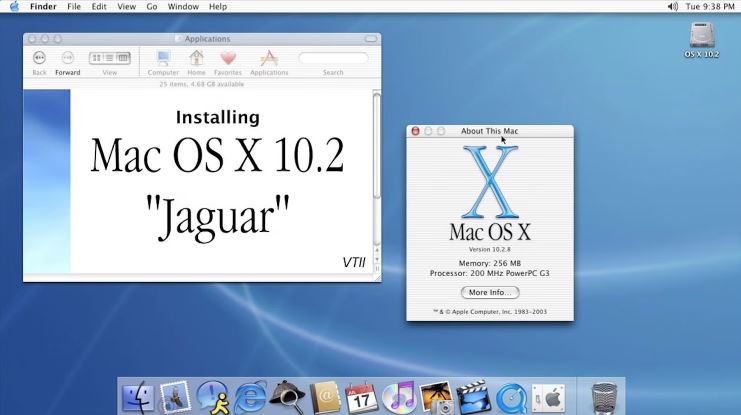
4. Mac OS X 10.3 (Panther) October 24, 2003
Apple has released macOS 10.12 (Sierra) and macOS 10.13 (High Sierra), both of which include new features for Mac users. macOS 10.12 includes new features for managing your photos and videos, as well as creating and editing documents. You can now use Photos to organize and share your photos with other people, or use the powerful tools in Photos to create albums and customize your photos.
macOS 10.13 includes enhanced security features for protecting your data, as well as new features for logging in to your Mac and accessing your files. You can now use Face ID to log in to your Mac or use Touch ID if you have an iPhone or iPad with a display that is enabled. If you are already using macOS 10.12 or 10.13, there are no required updates; however, if you want to take advantage of the new features in macOS 10.12 or 10.13, you should upgrade to those versions.
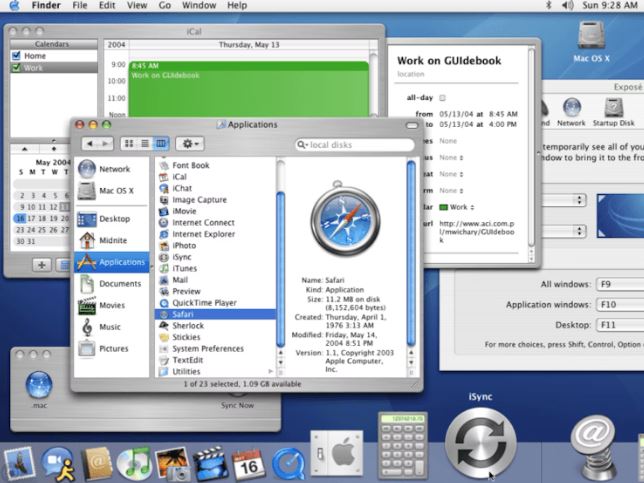
5. Mac OS X 10.4 (Tiger) April 29, 2005
If you’re looking to upgrade your operating system, here are the two versions of macOS that are supported
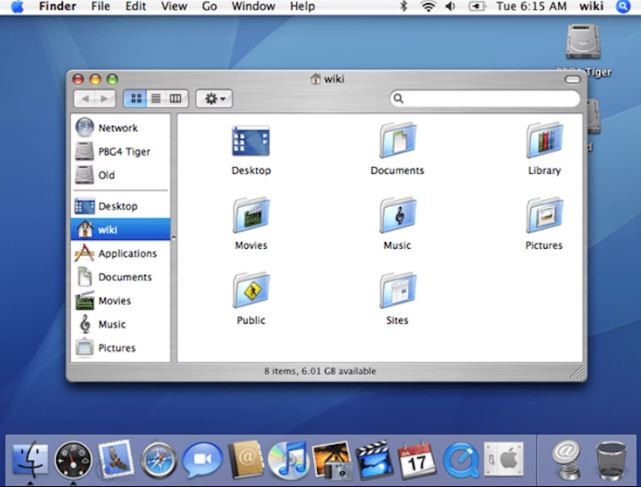
6. Mac OS X 10.5 (Leopard) October 26, 2007
One of the great things about macOS is that it runs on a variety of different versions of the Mac OS, from 10.5 ( Leopard ) to Mac OS X 10.12 Sierra. This means that you can use all of the features and apps that are available on those versions of macOS. However, not all features and apps are available on every version of macOS. So if you’re looking for specific features or apps, be sure to check the compatibility information before you buy or download them.
Here are some other things to keep in mind when using different versions of macOS: Some apps and utilities have been updated to work better with later versions of macOS. For example, Mail has been updated to support multiple accounts, Spotlight has been updated to include more search options, and Safari has been updated to support Touch Bar devices.
-Other apps have been redesigned or modified for use with later versions of macOS. For example, Photos has been redesigned with iCloud Photo Library integration and more powerful editing capabilities.
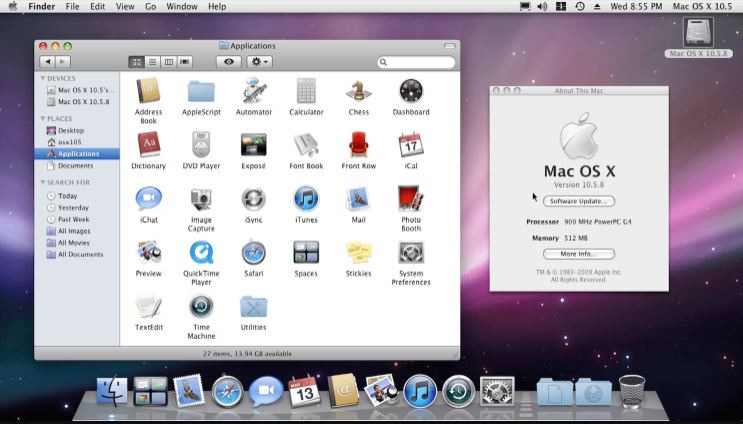
7. Mac OS X 10.6 (Snow Leopard) August 28, 2009
If you’re looking to upgrade your Mac OS X 10.6 (Snow Leopard) computer to the latest macOS Sierra, there are some important notes to keep in mind. First, you need to make sure that your computer meets all of the minimum system requirements. Second, if you have a late-2009 or later iMac or MacBook Pro, you will need to install a new power supply before upgrading. Finally, when upgrading, be sure to back up your important data first!

8. Mac OS X 10.7 (Lion) July 20, 2011
macOS X 10.7 (Lion) is the latest version of Apple’s macOS platform, released on July 5th, 2013. Lion includes many new features and improvements, including:
– A redesigned interface that makes it simpler to use
– New security features
– Improved performance
– Support for multiple languages

9. OS X 10.8 (Mountain Lion) July 25, 2012
macOS versions 10.8 (Mountain Lion), 10.9 (Mavericks), and 10.10 (Yosemite) are all supported on the latest Apple hardware. If you’re using an older Mac that doesn’t support the latest macOS releases, we strongly recommend upgrading to a newer model. Not only will your computer be more powerful, but you’ll also benefit from the newest features and enhancements in macOS 10.10 (Yosemite).
If you’re not ready to upgrade yet, be sure to check our Supported Mac Models page for a list of Macs that are currently supported with macOS 10.8 (Mountain Lion), 10.9 (Mavericks), and 10.10 (Yosemite). This page includes information on specific models and their compatibility with macOS releases.

10. OS X 10.9 (Mavericks) October 22, 2013
All macOS versions from MacOS 10.9 (Mavericks) is the latest version of the macOS operating system. This article will guide you through the main features of this version, as well as some of the problems that users have reported.
macOS 10.9 (Mavericks) is available in both a free and a paid version. The free version is limited to a single user and does not include any advanced features. The paid version includes more features and can be used by up to five users. The main features of macOS 10.9 (Mavericks) include:
– A redesigned user interface that makes it easier to use
– Improved performance and speed
– Support for multiple languages and regional settings
– Various bug fixes and enhancements
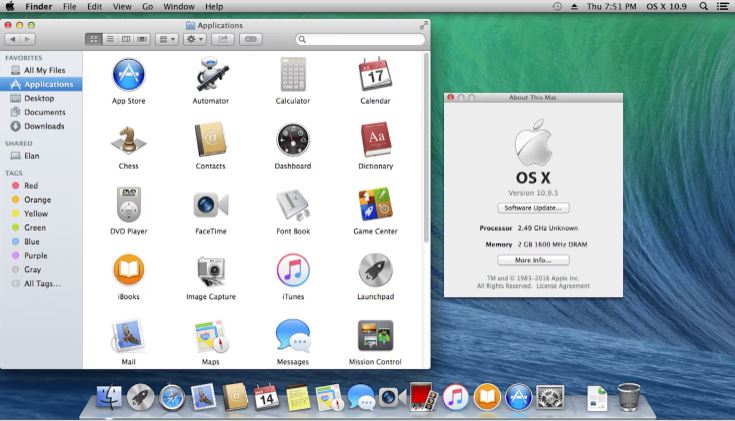
11. OS X 10.10 (Yosemite) October 16, 2014
macOS versions 10.11 (El Capitan), 10.12 (Sierra), 10.13 (High Sierra), and 10.14 (Mojave) are now available to download from the App Store. You can use these versions to update your Mac, install new apps, and fix problems. OS X 10.10 (Yosemite) is a free update for all users of macOS Sierra or higher. It includes new features like Dark Mode and Handoff, as well as improvements to the security and performance of your Mac.
OS X 10.11 (El Capitan) is available for $19.99 on the App Store, and it includes new features like AirPlay 2, Night Shift, and FaceTime HD. OS X 10.12 (Sierra) is available for $39.99 on the App Store, and it includes new features like Siri Shortcuts, Group FaceTime, and PDFKit. OS X 10.13 (High Sierra) is available for $59.99 on the App Store, and it includes new features like File System Integrity Protection, Audio Unit Extensions, and more…

12. OS X 10.11 (El Capitan) September 30, 2015
macOS 10.11 El Capitan is now available to download. This new version of macOS includes many new features and improvements, including AirPlay 2 support for streaming music from your Mac to AirPlay-enabled speakers or other devices
Siri support for dictating text messages (in English, Spanish, French, and German)
New Photos app with facial recognition, privacy settings, and search features
OS X 10.11 El Capitan also includes updates to Safari, Mail, Contacts, Calendar, Messages, Photos, App Store, and System Preferences.
If you are using an older version of macOS (10.10), we recommend that you upgrade to macOS 10.11 El Capitan as soon as possible. You can find instructions on how to upgrade your Mac here: https://support.apple.com/en-us/HT204834. If you are not currently using macOS but are interested in trying it out, you can find a demo model of macOS 10.11 El Capitan here: https://www.apple.com/osx/download/demo/

13. macOS 10.12 (Sierra) September 20, 2016
macOS 10.12 (Sierra) is now available to download! This new update includes many new features and improvements, including Improved security, a New Photos app with the redesigned album, and sharing features, Dark mode for macOS Mojave and Improvements to App Store performance

14. macOS 10.13 (High Sierra) September 25, 2017
macOS High Sierra is a major update for macOS and includes many new features and improvements.
macOS High Sierra includes new features such as dark mode, file system changes, and more. Here are some of the most significant changes in macOS High Sierra: Dark Mode: macOS High Sierra includes a new dark mode that makes your computer look more like Windows 10. This is a great way to make your computer easier to work with in low light conditions or if you want to save energy by reducing the amount of light that is used.
File System Changes: One of the most important changes in macOS High Sierra is the introduction of the new file system. This new file system makes it much easier to manage your files and storage. You can now see all of your files at once on your desktop instead of having to browse through folders.
iOS 11 Integration: macOS High Sierra also includes support for iOS 11 which means you can use many of the same apps and features on your computer that you use on your iPhone or iPad. This includes the ability to send and receive text messages, access social media, and more.

15. macOS 10.14 (Mojave) September 24, 2018
macOS 10.14 (Mojave) is available now and includes a number of new features and improvements. We’ve listed the top 10 features below.
1. Dark mode
2. Picture-in-picture support
3. Stacks for documents and files
4. Background app refresh
5. Quick Look previews in Mail, Messages, Safari, Maps, Calendar, and Contacts
6. Dynamic type support for Chinese, Japanese, and Korean text
7. Improved VoiceOver performance on Macs with built-in microphones
8. Security features including improved authentication for Third-Party Apps and Apple Pay Cash
9. Support for HomeKit accessories
10. More accurate device recognition

16. macOS 10.15 (Catalina) October 7, 2019
macOS 10.15 Catalina is now available to download and install on your Mac. This new macOS version includes a number of new features and improvements, including:
-A redesigned Photos app with newbie features including Moments, Memories, and Group Albums
-A new Maps app that offers better search and navigation capabilities
-The ability to use FaceTime over cellular networks in countries where it is blocked
-Many other new features and improvements
If you are currently using macOS 10.14 or earlier, we recommend that you update your system to macOS 10.15 Catalina as soon as possible. You can update your system by clicking on the “Update” button in the App Store or by going to Apple’s website (https://www.apple.com/macos/updates/) and downloading the appropriate installer package for your Mac.

17. macOS 11 (Big Sur) November 19, 2020
macOS 11 (Big Sur) is now available to download from the App Store. This new update includes a number of new features and improvements, including:
– A new dark mode for macOS units with a display size of 21 inches or larger
– AirDrop support for sharing files with other macOS devices
– Support for Arabic script in the System Preferences keyboard preferences
– Support for High Dynamic Range (HDR) video on the Apple TV 4K

18. macOS 12 (Monterey) Fall 2021
macOS 12 (Monterey) was released on September 19, 2018. The release is available on all macOS versions from 10.13.4 to 10.13.14.
macOS 12 (Monterey) includes new features, updates, and security enhancements. Some of the new features include:
– Improved Photos app with face scanning and improved filters
– Siri Shortcuts for tasks such as turning off lights and adjusting the thermostat
– Support for Continuity Camera and Emergency SOS
– New Mail app with support for drag and drop of images and text
– Updated Safari with a new layout, faster page loading, and enhanced privacy features
macOS 12 (Monterey) also includes security enhancements such as:
– Two-factor authentication protection for iCloud accounts
– Enhanced dyld security checks to protect against memory corruption attacks
– Improved system performance and reduced battery usage
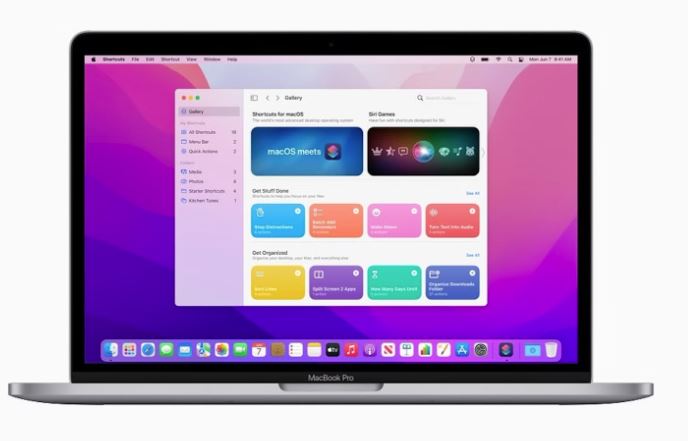
What’s the latest macOS?
macOS is a great operating system that comes in different versions, from the most recent macOS version to older releases. The current macOS version is macOS Mojave. It was released on September 24, 2018, and it’s the latest and greatest release of macOS. This version has several new features, including a new look for the interface, improvements to performance, and more.
There are also older versions of macOS available. For example, there’s macOS High Sierra (released in September 2017), macOS Sierra (released in December 2015), and macOS El Capitan (released in October 2014). These versions are still useful today and offer many of the same benefits as the latest release.
How to check the latest macOS on your Mac
If you’re looking for the latest and greatest version of macOS, you can check which version is installed on your Mac by going to the Apple menu in the upper-left corner of your screen, and selecting “About This Mac.” From there, you’ll be able to see the latest version of macOS that’s currently installed on your computer.
How to update to the latest version of macOS
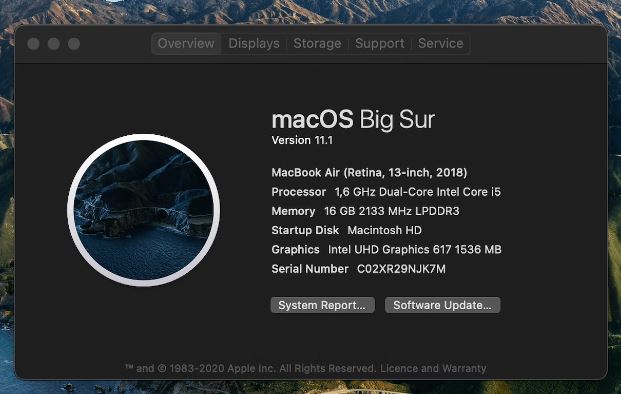
If you’re running macOS Sierra or later, you can update to the latest version by clicking on the “Updates” icon in the menu bar and selecting “Update MacOS.”macOS updates are generally small, but occasionally they may include new features or bug fixes. For more information on how to update your Mac, see our article How to Update Your Mac.
Final Words
Apple has released macOS Mojave, the latest update to its operating system for desktop and laptop computers. This update brings major changes, including a new look and feels that is closer to that of iOS11. macOS Mojave also includes new features such as Dark Mode, which makes the interface more readable at night, and smarter tracking of your usage patterns so you can see how you use your computer and make improvements.
macOS Mojave is available in versions 10.14.5 through 10.14.13 for Macs with an Intel Core i5 or faster processor and 8GB of memory or more. The update is free to users of current versions of macOS, and it requires a computer restart to take effect. For more information, visit Apple’s website or follow the instructions in the macOS Mojave installation guide that comes with your Mac.



